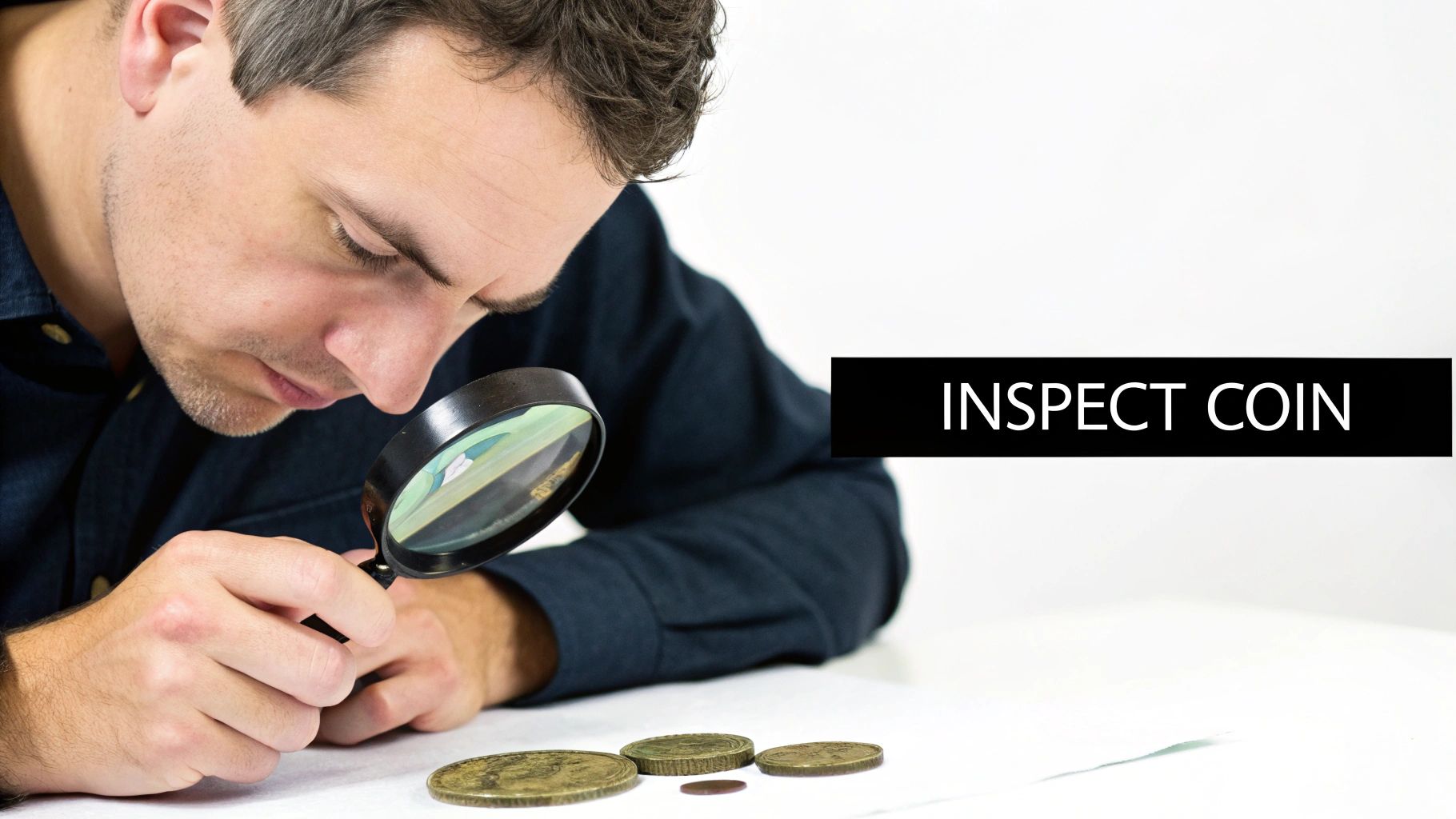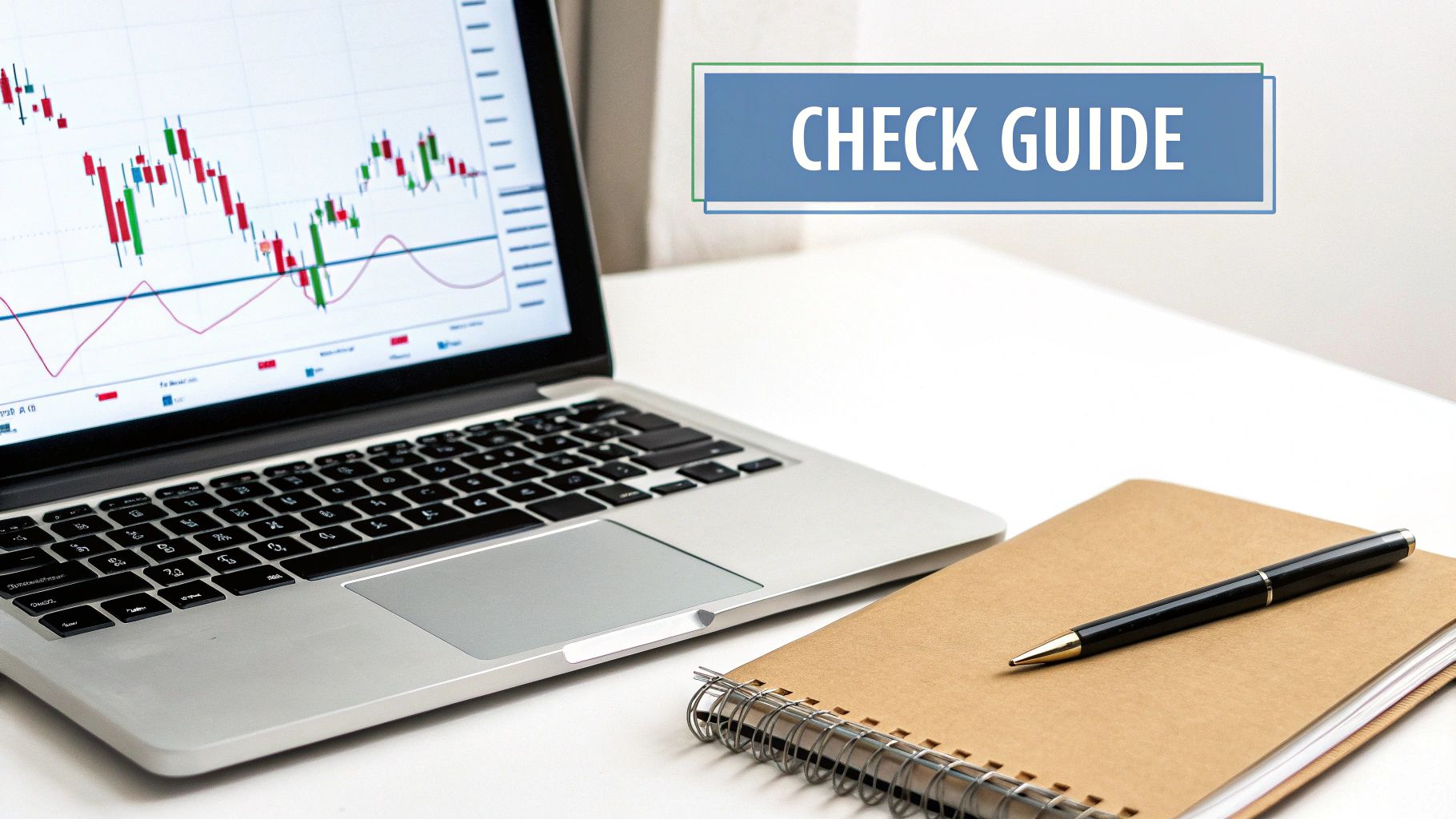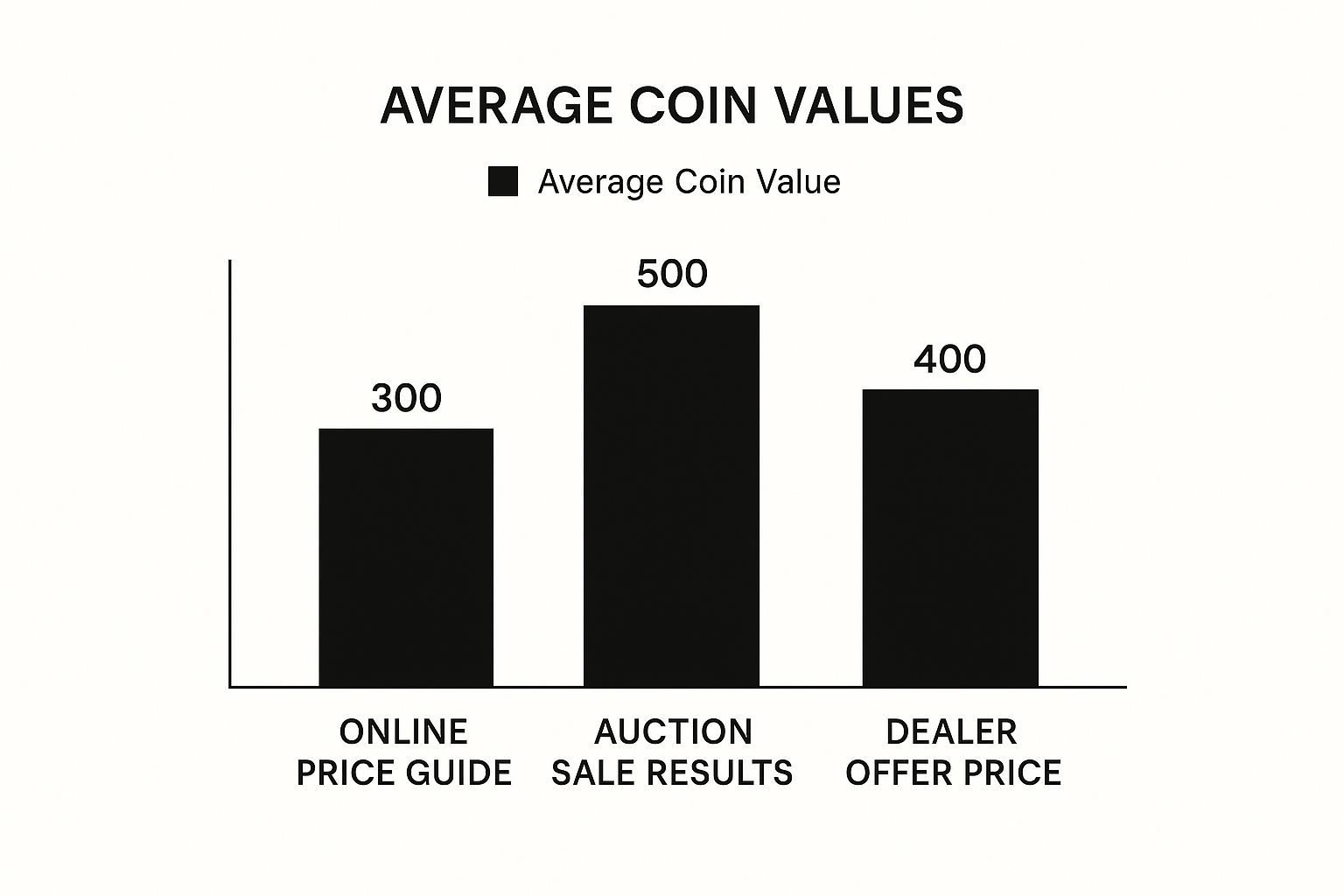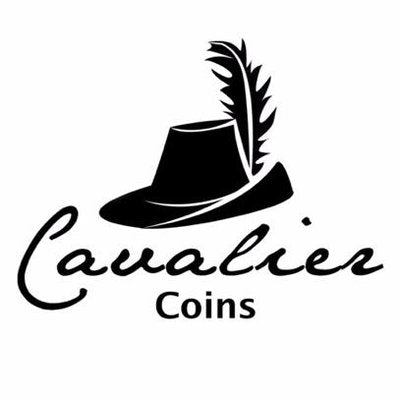Understanding What Makes Coins Valuable (Start Here)

Figuring out a coin's value is more than just guesswork. It's a careful process, similar to evaluating a vintage car or a painting. Four main factors determine a coin's worth: age, condition, rarity, and market demand. Knowing how these elements work together is key for anyone interested in coin values.
Age Isn't Everything
While age adds to a coin's history and appeal, it's not the only factor determining its value. A coin from the 17th century might be historically important, but a pristine coin from the 20th century could be worth considerably more. This is because rarity and condition often trump age.
For example, a common Victorian penny might only be worth a few pence, while a rare 1933 penny could be worth thousands of pounds. This highlights the complex interplay of factors affecting a coin's value.
Condition Is King
A coin's condition significantly impacts its appeal to collectors. A coin in mint state, meaning it's practically untouched and uncirculated, will be worth more than the same coin with wear and tear. Grading services offer standardized assessments of a coin's condition, from "poor" to "uncirculated," helping collectors and dealers determine fair market values. Therefore, two seemingly identical coins can have drastically different values depending on how well they've been preserved.
Rarity Drives Demand
Rarity is a major factor driving coin value. The fewer coins of a specific type that exist, the higher their potential worth. This scarcity can result from a limited initial mintage, historical events that led to coins being melted down, or even mint errors that create unique variations.
Historically, the value of coins in the UK has fluctuated significantly. Pre-1971 currency consisted of pence, shillings, and pounds, each affected by changes in metallic composition and the introduction of new coins. Find more detailed statistics here.
Market Demand: The Final Piece of the Puzzle
Market demand plays a vital role in a coin's current worth. Collector trends, economic conditions, and even media attention can influence how much people are willing to pay for a specific coin. This is similar to any collectible market where desirability can change over time.
For instance, a sudden surge of interest in a particular historical period might increase the value of coins from that era. Understanding market trends is therefore crucial for anyone trying to determine coin values.
Cracking The Code Of British Currency History

Understanding how to find coin value in the UK often involves exploring the captivating history of British currency. This historical context is especially important when assessing older coins. The 1971 decimalisation was a pivotal moment, significantly changing how we understand coin values today. Before this, the UK used a system of pounds, shillings, and pence (LSD), which can be confusing for modern collectors.
Pre-Decimalisation Days: LSD
Before 1971, pounds, shillings, and pence were the foundation of British currency. One pound equaled 20 shillings, and each shilling was worth 12 pence. Calculating the value of pre-decimal coins requires understanding these historical relationships.
For example, a coin marked as one shilling from 1970 wouldn't be worth a pound today. This illustrates how the decimalisation significantly impacts valuations.
The Decimal Shift: A Turning Point
The 1971 decimalisation simplified the currency, replacing shillings and old pence with a decimal pound and new pence. This change, while simplifying daily transactions, created a clear distinction between pre- and post-decimal coins. This distinction is crucial in determining coin values, especially for older pieces.
Interestingly, the British Pound reached a historical high of 2.86 against the US Dollar in December 1957. This impacted the value of coins and currency within the UK. Explore this topic further.
Historical Events And Coin Values
Political and economic events throughout British history have directly influenced the creation of rare and valuable coins. Certain periods, such as wartime or economic booms, saw the introduction of new coins or changes in metal composition. These changes resulted in scarcity and unique features that are highly valued by collectors.
Understanding these historical periods is key to finding coin value. The Most Valuable Coins in the World provides further insight. This historical perspective allows collectors to discover hidden value that might otherwise be missed.
Professional Valuation Methods That Give Real Results
Determining a coin's value doesn't have to be a guessing game. This section explores the systematic approaches used by professionals to achieve accurate valuations. We'll delve into the methods employed by numismatists, from time-honored reference materials to modern digital tools that track live market data.
Traditional Valuation Tools
Reference catalogues have long served as cornerstones of coin valuation. These comprehensive guides categorize coins by country, date, and mint mark, offering estimated values based on their condition. They function much like encyclopedias for coins, offering a solid starting point for understanding a coin's potential worth.
Auction house records provide another valuable resource. These records document the actual prices realized for coins at auction, offering a real-world glimpse into market demand. However, auction prices can fluctuate. Considering data from multiple sales is essential for a more accurate assessment, similar to how comparing multiple house sales in a neighborhood gives a better sense of market value.
Modern Valuation Resources
Technology has revolutionized the way we determine coin values. Online databases, including those tracking auction results and dealer listings, provide readily accessible pricing information. These digital tools offer up-to-the-minute market insights, exceeding the capabilities of traditional printed guides in reflecting current trends.
Smartphone apps utilizing image recognition for coin identification are also emerging. While their accuracy can vary, these apps offer a quick initial assessment, facilitating easier identification of unfamiliar coins.
The Importance of Condition Grading
A coin's condition significantly impacts its value. Professional grading services offer standardized assessments of a coin's condition, ranging from "poor" to "uncirculated". This standardized grading enables direct comparisons, establishing a transparent framework for understanding a coin's market value based on its preservation. For further insights into coin valuation, you might find this helpful: Expert Coin Collection Valuation Tips for UK Coins.
When to Consult a Professional Appraiser
While these resources equip you with valuable information, professional appraisal services remain essential in certain situations. For particularly rare or complex coins, an expert numismatist can provide definitive valuations. This is comparable to seeking a specialist's opinion on a complex medical issue; sometimes, expert knowledge is indispensable. Numismatists possess specialized expertise and access to advanced resources needed for highly accurate valuations, especially for high-value coins, inherited collections, or situations involving potentially substantial sums.
Spotting The Hidden Gems In Your Collection

Not every valuable coin is immediately obvious. Some of the most sought-after pieces look like ordinary pocket change. This means understanding how to assess coin value involves a sharp eye and a bit of detective work. This section explores the subtle signs that can indicate a coin is worth much more than its face value.
Royal Mint Special Releases
The Royal Mint produces a wide array of coins, including commemorative coins like the five-pound crown and ceremonial Maundy money. These special releases often have distinct values due to their rarity and desirability for collectors. Discover more insights about British coins. Often produced in limited numbers, these coins become highly sought after. Their unique designs and historical context contribute to their premium value. For example, a five-pound crown commemorating a royal anniversary can be worth significantly more than its face value because of its limited mintage and commemorative design. This is similar to how limited-edition stamps or art prints appreciate in value over time.
Mint Errors: Accidental Treasures
Sometimes, errors during the minting process result in error coins. These coins, featuring off-center strikes, double stamping, or unusual metal compositions, become highly collectible. A seemingly minor error can transform an ordinary coin into a valuable piece. Some mint errors can increase a coin's value a hundredfold or even more. This is because they offer a unique glimpse into the minting process and are frequently one-of-a-kind.
Intrinsic vs. Numismatic Value
Understanding the difference between intrinsic and numismatic value is crucial. Intrinsic value refers to the metal content of a coin, particularly important for coins made of precious metals like gold or silver. Numismatic value, conversely, represents a coin's value to collectors. This value is influenced by factors like rarity, condition, and historical importance. A silver coin, for instance, always retains its intrinsic silver value, but its numismatic value can change considerably based on collector demand and the coin’s condition.
Identification and Research Strategies
Identifying potentially valuable coins requires careful observation. Look for unusual markings, mint errors, or signs of wear that might indicate historical significance. Research is also essential. Online resources, coin catalogues, and connecting with seasoned collectors can help determine a coin’s actual worth. You might be interested in: Seven Tips for Buying Collectable Coins. By combining careful examination with dedicated research, you can refine your approach to coin evaluation and uncover hidden treasures within your collection.
Reading Market Trends That Actually Matter
Understanding market dynamics is key for successful coin collecting. It's about anticipating changes, like a seasoned sailor reading the tides. This involves analyzing market trends, understanding how supply and demand affect values, and making smart buying and selling decisions.
Supply and Demand: The Driving Forces
Like any collectible market, coin values depend heavily on supply and demand. Low supply and high demand push prices up, while an abundance of a specific coin can decrease its value. This principle is fundamental to how the market works. For example, a historically significant, rare coin will likely command a higher price due to its scarcity and desirability.
Seasonal Patterns and Long-Term Trends
Coin values are dynamic, fluctuating based on various factors. Seasonal patterns can cause short-term price shifts. For example, demand for certain coins might increase around anniversaries or holidays, creating temporary price spikes. Long-term trends, however, are shaped by broader market forces and collector behavior. Recognizing these patterns is essential for strategic collecting.
Precious Metal Prices and Economic Influences
Coins containing precious metals, like gold and silver, are also affected by the fluctuating prices of these commodities. The exchange rate of the British Pound against other currencies, such as the US Dollar, can influence the perceived value of coins, especially those made from precious metals like gold and silver. Discover more insights about British Pound here. Economic conditions also play a significant role in collector behavior. During economic uncertainty, some collectors might sell parts of their collections, while others might seek tangible assets like precious metal coins.
Interpreting Price Guides and Auction Results
Price guides offer helpful information, but they don't always reflect real-time market values. Auction results provide a more accurate snapshot of what collectors are currently paying. Auctions show actual transactions, while price guides offer estimated values based on past data and expert opinions. Understanding the difference between these resources is crucial for making informed decisions. Analyzing both price guides and recent auction data gives you a comprehensive view of the market.
Digital Tools That Transform Your Coin Research

The infographic above illustrates the variations in average values you might find for the same coin. Sources compared include online price guides, auction results, and dealer offerings. Auction results often represent the highest price a collector is willing to pay. Dealer offers, however, tend to be lower to allow for profit.
This difference underscores the importance of checking multiple sources. Doing so helps you develop a comprehensive understanding of a coin's potential value.
Smartphone Apps For On-The-Go Identification
Technology has simplified the process of determining a coin's value. Many smartphone apps now offer image recognition to instantly identify coins.
However, accuracy varies between apps. Some excel at identifying common UK coins. Others may struggle with less common denominations or worn coins. It's always a good idea to research reviews and compare features before selecting an app. This gives collectors a portable tool for quick initial assessments.
Online Databases and Marketplaces: A Wealth of Information
Beyond apps, online databases offer extensive resources for valuing coins. These platforms often track real-time auction results. This provides up-to-the-minute insights into current market demand.
Sites like eBay can reveal current selling prices. This provides a snapshot of what buyers are currently spending. Specialized online coin marketplaces catering to UK collectors offer a more focused selection and detailed information.
Social Media and Online Communities: Tapping Into Collective Wisdom
Online communities offer a space for collectors to connect and share their knowledge. Joining UK-focused Facebook groups, forums, or online numismatic societies can be invaluable.
You can gain insights from experienced collectors and ask questions. You can even connect with potential buyers or sellers. This access to collective experience adds a human element to the data-driven aspects of coin collecting.
Building Your Digital Catalogue: Staying Organised and Informed
Technology also helps manage your collection effectively. Digital cataloguing tools allow you to create detailed records for each coin. You can include images, condition assessments, and purchase prices.
Some apps even track value changes over time. This provides a clear overview of your collection’s overall performance. This organized approach lets you easily access key information. You can also monitor your collection’s value as market conditions evolve.
To help you choose the right tools, we've compiled a comparison of some popular options:
Digital Coin Valuation Tools Comparison: This table compares popular digital tools and platforms for coin identification and valuation, including features, accuracy, and cost.
| Tool/Platform | Key Features | Accuracy Level | Cost | Best For |
|---|---|---|---|---|
| PCGS Photograde Online | Image matching against PCGS-graded coins | High, but dependent on image quality | Free for basic use, paid subscription for advanced features | Collectors seeking a quick estimate based on certified examples |
| NGC Coin Explorer | Comprehensive database with images and pricing data | Generally high | Free | Researching and identifying coins |
| CoinFacts | Historical data, mintage figures, and price charts | Varies based on the source of the information | Free | Understanding long-term price trends |
| eBay | Real-time auction and sales data | Reflects current market activity, but can be influenced by individual sellers | Free to browse | Gauging current market demand and pricing |
| Facebook groups (e.g., UK Coin Collectors) | Community-driven discussions and valuations | Varies based on the expertise of group members | Free | Seeking advice and opinions from experienced collectors |
By using these tools, you can gain a more accurate and well-rounded perspective on your coin collection's value. Remember to consider your specific needs and collecting goals when choosing the best tools for your research.
Your Personal Coin Valuation Strategy (Key Takeaways)
Building a successful coin valuation strategy takes time and a systematic approach. Think of it like developing a musical skill – practice and patience are key. This involves creating a personalized method, combining various valuation resources, and refining your approach over time for greater accuracy. This section outlines the essentials for building your own valuation process.
Prioritizing Valuation Factors
Not all factors carry the same weight when valuing a coin. Condition, for instance, is often paramount, especially for modern coins. A pristine uncirculated coin will typically be worth more than a worn example, even if the worn coin is older. However, for ancient or medieval coins, rarity and historical significance often outweigh condition due to their age and scarcity. Understanding the key drivers of value for different coin types is crucial.
Realistic Expectations and Coin Types
Different coin types demand different valuation approaches. Common circulating coins are generally valued based on their metal content and condition. Commemorative coins, on the other hand, are often driven by collectibility and limited mintage. It's also important to differentiate between insurance valuations (replacement cost), market values (what a collector would pay), and quick-sale prices (what a dealer might offer) to set realistic expectations.
To help guide your valuation process, consider the following checklist:
Coin Valuation Checklist
| Valuation Factor | Priority Level | Assessment Method | Impact on Value | Notes |
|---|---|---|---|---|
| Condition | High (Modern), Medium (Ancient/Medieval) | Grading scales (e.g., Sheldon scale), visual inspection | Significant, especially for modern coins | Consider wear, scratches, cleaning, and overall preservation |
| Rarity | High (Ancient/Medieval), Medium (Modern) | Mintage figures, population reports, auction records | Can drastically increase value for scarce coins | Research how many exist and how often they appear on the market |
| Historical Significance | High (Ancient/Medieval), Medium (Modern) | Historical records, numismatic publications | Adds value to coins associated with important events or figures | Research the coin's historical context |
| Metal Content | High (Bullion coins), Medium (Circulating coins) | Spot price of metal, weight of coin | Determines baseline value for bullion and common circulating coins | Track current metal prices |
| Demand/Collectibility | High (Commemorative coins), Medium (Other types) | Auction prices, dealer listings, collector forums | Reflects current market interest and trends | Can fluctuate based on popularity and trends |
This checklist offers a framework for systematically evaluating coins. Remember to prioritize the factors based on the specific coin type you're assessing.
Record-Keeping: Tracking Your Treasures
Maintaining detailed records is essential. Think of your collection like a personal stock portfolio – accurate records empower informed decisions. Record key details like date of purchase, price paid, condition, and any relevant historical information. This documentation is particularly important for insurance purposes or when selling.
Systematic Valuation: A Step-by-Step Process
Whether valuing a single coin or your entire collection, a consistent process ensures reliable results. Start by identifying the coin. Research its history and mintage figures. Assess its condition. Consult pricing resources like online databases, auction records, and dealer listings. Explore this topic further Accurately determining coin values requires considering market demand, historical data, rarity, and collectibility.
Building Confidence Over Time
A consistent valuation strategy builds confidence. With experience, you’ll learn to interpret data, recognize market trends, and make sound judgements about your collection's worth.
Ready to explore the world of numismatics? Cavalier Coins Ltd offers a wide selection of coins and banknotes for all levels of collectors. Whether seasoned numismatist or just beginning, they provide resources and expertise to enhance your collecting journey.

